The Humble Tripod
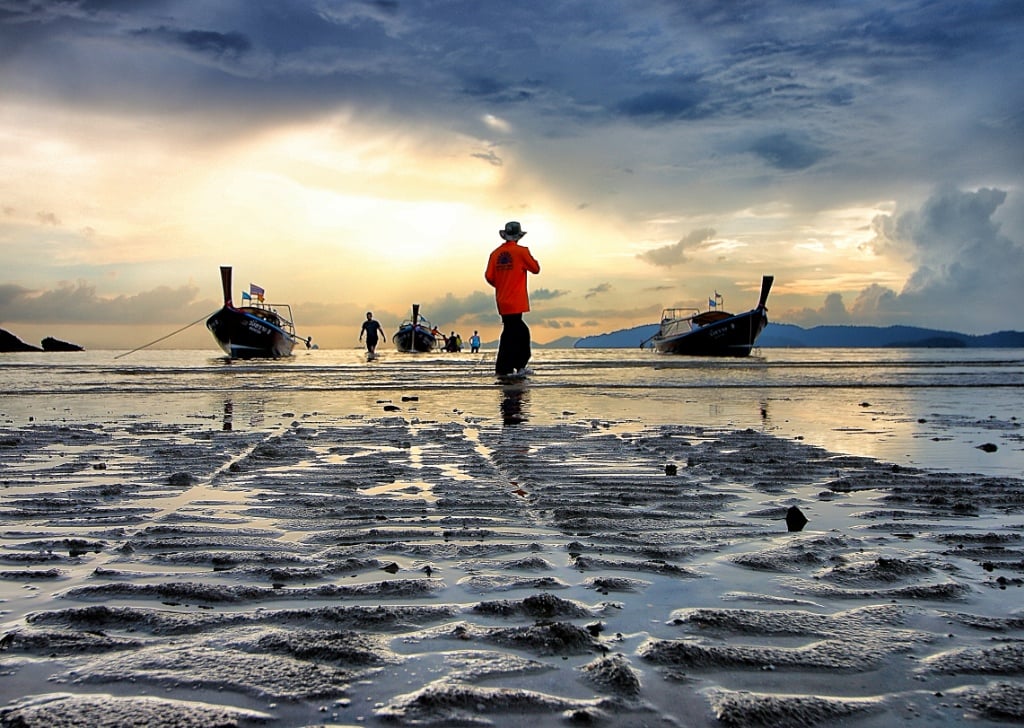 A tripod is one of the most useful accessories in any photographer’s arsenal of gadgets. What an irony then that most of us hate bringing our tripods on our vacations. There are many reasons for photographers thinking of tripods as irritations: they are cumbersome, take too much time to pack and set up, and takes up far too much space in our luggages.
A tripod is one of the most useful accessories in any photographer’s arsenal of gadgets. What an irony then that most of us hate bringing our tripods on our vacations. There are many reasons for photographers thinking of tripods as irritations: they are cumbersome, take too much time to pack and set up, and takes up far too much space in our luggages.
I hope to share in my this article six situations where tripods are absolutely in the quest to shoot the perfect picture. Rediscover and appreciate the humble tripod and hopefully learn to love it again.
1. To Optimise Low ISO Shots
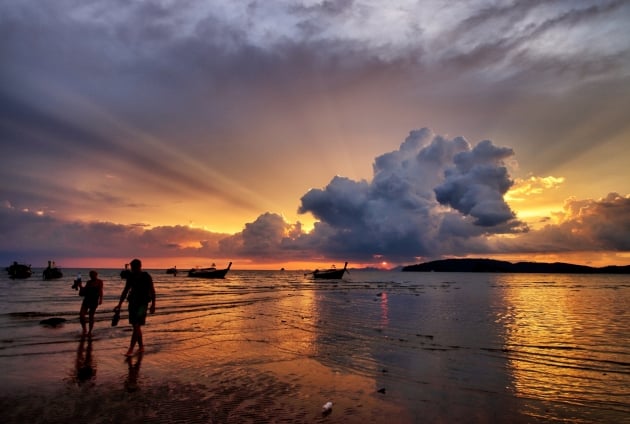 For starters, the mindset is all important. We all want the best picture quality possible. This usually involves lowest ISO setting possible to milk the ultimate pixels quality from our camera sensors – all photographers dislike “noise” in our pictures. In low light situations, such as the sunset shot at Nopphrat Thara Beach, Krabi (above), the use of a tripod is highly recommended.
For starters, the mindset is all important. We all want the best picture quality possible. This usually involves lowest ISO setting possible to milk the ultimate pixels quality from our camera sensors – all photographers dislike “noise” in our pictures. In low light situations, such as the sunset shot at Nopphrat Thara Beach, Krabi (above), the use of a tripod is highly recommended.
A tripod in this situation facilitates composition. The setting sun will be in a predictable trajectory, and with the camera on tripod, you will be able to stay focused on human activities, clouds, waves as they unfold and change before you. Another bonus is the sharpness as a result of tripod stability, which allows you to blow up big prints.
2. To Assist With Carefully-Composed Shots
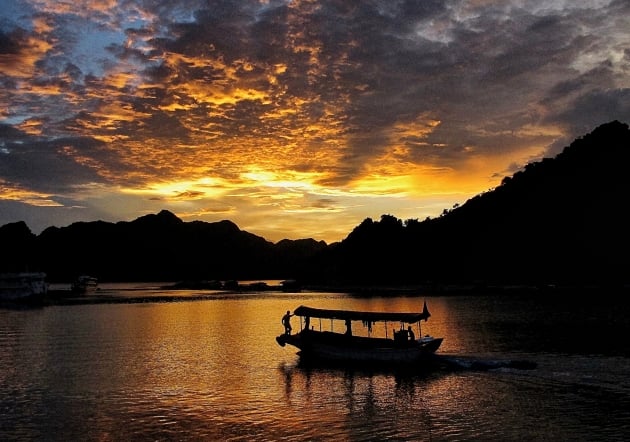 “Patience is bitter, but its fruit is sweet” – Jean-Jacques Rousseau
“Patience is bitter, but its fruit is sweet” – Jean-Jacques Rousseau
I wonder if Jean-Jacques Rousseau received his epiphany about patience after camping with his tripod for a perfect shot. Often, getting these shots are subject to both a great deal of patience on our end and blessings by nature. In this golden moment at Halong Bay, Vietnam (above), I stood on my cruise boat cabin’s ensuite deck, my Canon Powershot G12 on its tripod, waiting an eternity for something to happen.
It was a quiet evening, but after half an hour of standing and waiting and 30 preparatory shots in the warm humid air, the cruise boat crew took their secondary boat to a fishing village nearby for a ride by the sunset. I only had time for 2 shots, and this was my favourite of the two. This shot made carrying the tripod to Vietnam worth the hassle.
3. To Capture Movement
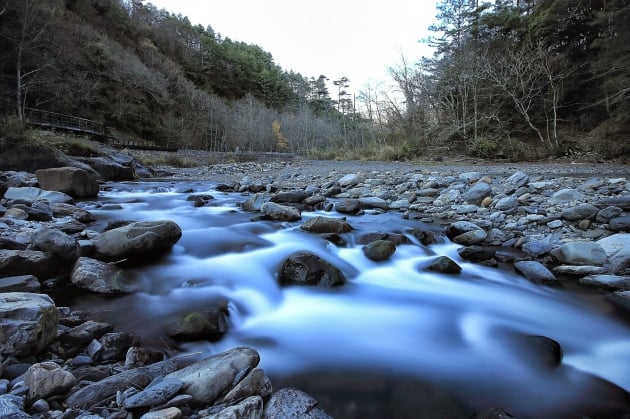 There comes a time when blurriness is appreciated to convey the sensation of movement, as in the case of a flowing stream or waterfall. In this picture of the river in Wuling Farm, Taichung, one of the most beautiful nature reserves in Taiwan, having a tripod is a must! I shudder at the thought of not having one.
There comes a time when blurriness is appreciated to convey the sensation of movement, as in the case of a flowing stream or waterfall. In this picture of the river in Wuling Farm, Taichung, one of the most beautiful nature reserves in Taiwan, having a tripod is a must! I shudder at the thought of not having one.
The mood of the river cascading down the embankment would have been lost if the stream were to be “frozen” due to a high shutter speed. As the shutter speed used for this shot was 25 fps, a tripod’s not an option here – it’s a must.
4. For HDR or Digitally-Blended Pictures
 One of the advantages of digital photography is that we have the option to perform post-edits and achieve detailed enhancements with High-Dynamic Range (HDR) shots or digital blending. A camera stably secured on a tripod allows for the merging of multiple frames or bracketed exposures to be combined for improved details that cannot be achieved with a single frame.
One of the advantages of digital photography is that we have the option to perform post-edits and achieve detailed enhancements with High-Dynamic Range (HDR) shots or digital blending. A camera stably secured on a tripod allows for the merging of multiple frames or bracketed exposures to be combined for improved details that cannot be achieved with a single frame.
Again, I shudder at the thought of not having my tripod with me at this gorgeous location. In fact, I’ve seen tourists with DSLRs at the Singapore River, resting their cameras on bridge ledges and chairs for sharper pictures. A single frame picture would be passable, but for the picture above, which was merged from three frames, a rock-solid tripod is mandatory. To further ensure sharpness, minimize shutter shock and use a wired or remote shutter release, with its mirror lock-up mode engaged.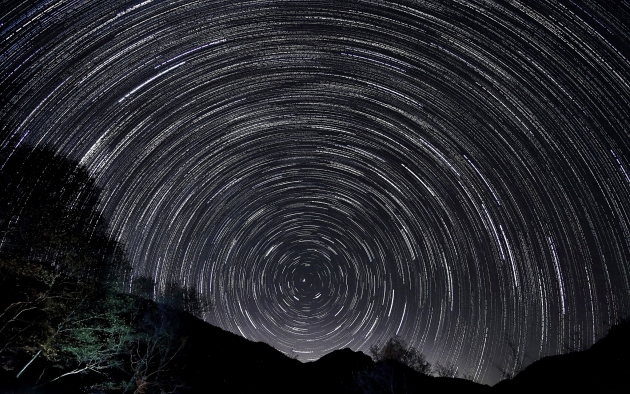 Also, the image stabilisation (IS) function should be turned off and the focus should be done manually. These steps are similar for those engaging in astro or star-trail photography as you can see above, which was shot in Xueshan (Snow Mountain) in Taiwan. The picture is composed by stacking 79 frames which was shot at 30 seconds per frame, with the camera mounted on tripod.
Also, the image stabilisation (IS) function should be turned off and the focus should be done manually. These steps are similar for those engaging in astro or star-trail photography as you can see above, which was shot in Xueshan (Snow Mountain) in Taiwan. The picture is composed by stacking 79 frames which was shot at 30 seconds per frame, with the camera mounted on tripod.
5. For Still Photos with Motion
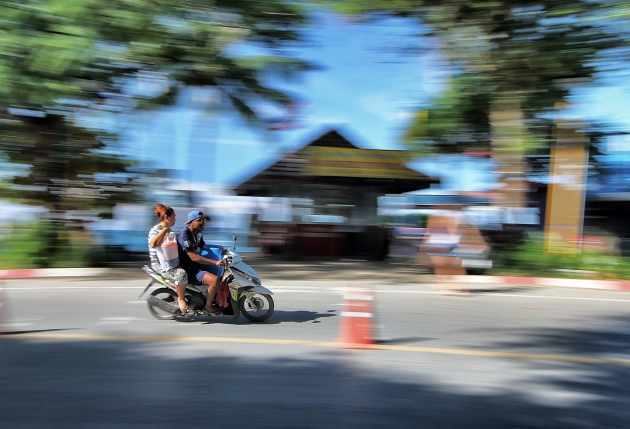 When panning techniques are used to capture movement in bright daylight, cameras mounted on tripods deliver much better speed effects. To achieve successful “sharp-blur” movement effects in stills, my only suggestion is practise, practise, practise. Try to gauge your own body fluidity in movement as you follow your subject and squeeze the shutter.
When panning techniques are used to capture movement in bright daylight, cameras mounted on tripods deliver much better speed effects. To achieve successful “sharp-blur” movement effects in stills, my only suggestion is practise, practise, practise. Try to gauge your own body fluidity in movement as you follow your subject and squeeze the shutter.
Choose an ideal location with less chance of human traffic affecting your concentration and movement, or tripping over your tripod. Then have a great time practising “hip rotation” as you track your subjects. As a general guide, start with 1/30 fps for motorcycles, 1/15 fps for runners, and 1/100 fps for speeding F1 cars. Adapt to the situation. Like a wise kungfu sage once said, “be like water, my friend”.
6. To Be in the Picture
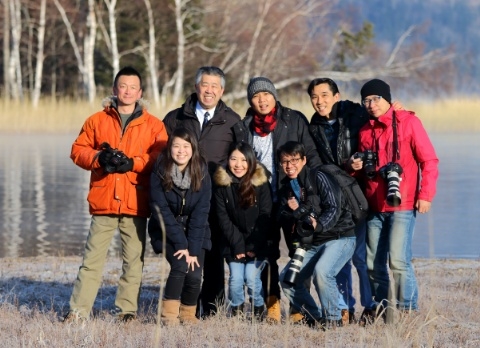 One of my personal regrets is frequently not being in pictures I compose. Either you get someone to shoot the photo, with the chance that you won’t find the photo composition satisfactory, or you are never in the picture. Without a tripod, the “whole group minus one” situation always arises. Unless you have a professional photographer tagging along to shoot for you, you run the risk of having photos with your legs “chopped off”, 100%-centered subjects, or full of minor annoyances when you entrust passersby to shoot for you.
One of my personal regrets is frequently not being in pictures I compose. Either you get someone to shoot the photo, with the chance that you won’t find the photo composition satisfactory, or you are never in the picture. Without a tripod, the “whole group minus one” situation always arises. Unless you have a professional photographer tagging along to shoot for you, you run the risk of having photos with your legs “chopped off”, 100%-centered subjects, or full of minor annoyances when you entrust passersby to shoot for you.
In worst-case scenarios, you might even see your camera stolen by the stranger you handed your camera to! I have entire family vacation albums in which I hardly appeared. So much that viewers would exclaim “oh, finally, there you are!” In the picture above, I managed to get myself and everyone in the travel group in a photo during a trip sponsored by the Hokkaido Tourism Board.
If you want to be in a picture that is the result of your own composition, a tripod is a MUST!
Final Words
If you’re hesitating about bringing your tripod for your next trip, think about if you’ll encounter any of the 6 scenarios above. Bringing a tripod might be a hassle, but the photos it will enable you to take might prove to be worth it. I hope that through this article, you will love your tripod more. Bring it out more often and shoot better pictures with it. Vive Le Tripod !
Note: Please note that tripods with recessed spiked tips must be checked in before flights, as the sharp tips will show up on the X-ray scanner and will be disallowed as hand-carry items.
All pictures are shot by the author with all rights reserved. This article appeared in CanonEOSWorld with some amendments.